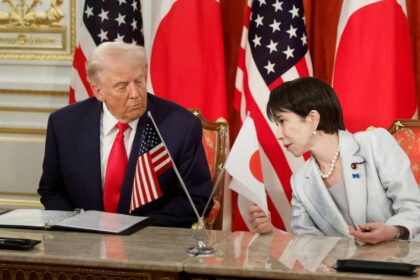Thailand’s Electric Vehicle Revolution: The Chinese Investment Surge
Thailand, long known as the “Detroit of Southeast Asia,” is undergoing a dramatic transformation in its automotive industry. Once dominated by Japanese automakers, the country is now at the epicenter of a new wave: the electric vehicle (EV) revolution, powered largely by Chinese investment. In just a few years, Chinese EV manufacturers have poured more than $1.4 billion into Thailand, building factories, setting up supply chains, and challenging the status quo of the region’s auto sector.
- Thailand’s Electric Vehicle Revolution: The Chinese Investment Surge
- Why Are Chinese EV Makers Flocking to Thailand?
- How Chinese EVs Are Disrupting Thailand’s Auto Industry
- Price Wars, Overcapacity, and Market Challenges
- Building the EV Supply Chain: Opportunities and Risks
- Thailand’s EV Ambitions: Green Goals and Global Competition
- Challenges Ahead: Sustainability, Competition, and the Road Forward
- In Summary
This influx is not just about new cars on the road. It represents a fundamental shift in Thailand’s industrial landscape, its economic ambitions, and its role in the global clean energy transition. But the story is not without challenges—price wars, local industry disruption, and questions about long-term sustainability loom large.
Why Are Chinese EV Makers Flocking to Thailand?
China’s electric vehicle sector has grown at breakneck speed over the past decade, fueled by generous government subsidies and a fierce domestic market. As competition at home intensified and Western markets erected trade barriers, Chinese automakers began looking abroad for new opportunities. Thailand, with its established automotive base, strategic location, and government incentives, quickly emerged as a prime destination.
Several factors make Thailand especially attractive:
- Government Incentives: Thailand’s government has rolled out a suite of subsidies, tax breaks, and production incentives to lure foreign EV makers. These include cash subsidies of up to 150,000 baht per vehicle and requirements that encourage local production over imports.
- Strategic Location: Situated at the heart of Southeast Asia, Thailand offers access to a large regional market and established logistics networks.
- Auto Industry Heritage: Decades of experience as a regional manufacturing hub mean Thailand already has a skilled workforce and a robust supply chain, albeit one historically focused on gasoline vehicles.
- Belt and Road Initiative (BRI): The deepening partnership between China and Thailand under the BRI has further smoothed the path for Chinese investment, with EVs named a priority sector for cooperation.
As a result, leading Chinese brands like BYD, MG, Great Wall Motor, Changan, and Omoda & Jaecoo have announced or launched major investments in Thai manufacturing. BYD’s new plant in Rayong, for example, is set to produce 150,000 vehicles annually and create around 10,000 jobs.
How Chinese EVs Are Disrupting Thailand’s Auto Industry
The impact of Chinese investment has been swift and profound. In just two years, Chinese brands have captured about 80% of Thailand’s EV market share, with BYD, Neta, and MG leading the pack. Billboards for Chinese EVs now line Bangkok’s highways, and showrooms for these brands are proliferating across the country.
This surge has upended the traditional dominance of Japanese automakers. Factories owned by Subaru and Suzuki are shutting down or scaling back, while Honda and Nissan are reducing production. The Thai government’s goal is for 30% of all vehicles produced domestically to be electric by 2030—a target that now seems achievable largely thanks to Chinese investment.
But the transition is not without pain. The shift to EVs is threatening the $53 billion internal combustion engine vehicle (ICEV) industry, which has seen production drop by 20% and sales hit a 14-year low. Local auto parts suppliers, especially those focused on gasoline engines, are struggling to adapt. The Thai Auto Parts Manufacturers Association estimates that only a small fraction of local suppliers will be able to serve the new EV supply chain, and some have already closed their doors.
For Thai workers, the changes are unsettling. The auto industry supports nearly a million jobs, and there are concerns that Chinese companies—often more reliant on automation and less tolerant of labor unions—may not offer the same employment opportunities or working conditions as their Japanese predecessors.
Price Wars, Overcapacity, and Market Challenges
One of the most visible effects of the Chinese EV influx has been a fierce price war. As Chinese brands compete for market share, they have slashed prices, making EVs more affordable for Thai consumers but squeezing margins for all automakers. BYD, for instance, has offered deep discounts on its Dolphin model, prompting scrutiny from regulators but ultimately being cleared of wrongdoing.
This intense competition has led to a paradox: even as EV sales rise (projected to exceed 100,000 units this year), the overall Thai auto market is slumping. High household debt, tighter credit, and economic uncertainty have dampened demand. Many consumers are delaying purchases in anticipation of further price cuts, while some Chinese brands, like Neta, have struggled to meet local production requirements and faced financial difficulties.
The Thai government has responded by adjusting its subsidy programs. Now, automakers can count exported vehicles toward their local production commitments, encouraging companies to use Thailand as an export base for Southeast Asia and beyond. This is crucial, as the domestic market alone cannot absorb the growing output from new factories.
Building the EV Supply Chain: Opportunities and Risks
Chinese investment is not limited to car assembly. Auto parts manufacturers from China have tripled their presence in Thailand, particularly in the booming EV battery sector. This expansion is turning Thailand into a regional supply base, with the potential to serve other Asian markets.
However, the most valuable parts of the EV supply chain—battery cell manufacturing and advanced research and development—remain largely in China. While Thailand is seeing a wave of assembly and battery-pack projects, the core technology and high-value production stay in Chinese hands. According to industry analysts, only about 15% of global announced EV capacity is outside China, and foreign projects face higher execution risks and slower completion rates.
This dynamic presents both opportunities and challenges for Thailand. On the one hand, local assembly creates jobs and attracts investment. On the other, it risks leaving Thailand dependent on imported technology and vulnerable to shifts in Chinese corporate strategy or global trade tensions.
Local Industry Concerns and Calls for Policy Action
Thai officials are keenly aware of these risks. The Board of Investment is actively encouraging Chinese companies to increase their use of locally sourced materials and components, and to form joint ventures with Thai firms. The goal is to ensure that the benefits of the EV transition are widely shared and that Thailand develops its own capabilities in the new green economy.
In an interview, Narit Therdsteerasukdi, Secretary General of the Thailand Board of Investment, emphasized, “Chinese investments have played a crucial role in reshaping Thailand’s industrial landscape, driving growth in key sectors aligned with the nation’s strategic goals.”
Yet, local suppliers face tough competition on price and technology. Some are urging the government to require a higher proportion of locally sourced parts in EVs, while others are calling for support to help workers retrain for new roles in the EV sector.
Thailand’s EV Ambitions: Green Goals and Global Competition
Thailand’s embrace of electric vehicles is not just about industrial policy—it’s also about climate and energy strategy. The government’s target of making 30% of domestic vehicle production zero-emission by 2030 aligns with broader efforts to reduce carbon emissions and position Thailand as a leader in sustainable transportation.
This dovetails with China’s own shift toward “BRI 2.0,” a greener and more commercially driven version of the Belt and Road Initiative. After years of criticism over the environmental and social impacts of BRI projects, Beijing is now prioritizing clean energy and green technology exports. In 2024, clean-energy technologies accounted for a record 10% of China’s GDP, with sales and investment worth $1.9 trillion.
For Thailand, this means access to advanced EV technology and the chance to become a regional hub for clean tech. But it also means navigating the risks of overcapacity, price volatility, and dependence on foreign suppliers. Policymakers must balance the benefits of onshored manufacturing with the need to protect local industry and ensure a just transition for workers.
Regional and Global Implications
Thailand’s experience is being closely watched across Southeast Asia and beyond. As Chinese automakers face barriers in the US and Europe, they are turning to emerging markets like Thailand, Indonesia, Brazil, and Malaysia. These countries offer fewer trade barriers and growing consumer demand, making them attractive targets for Chinese expansion.
China’s strategy is clear: establish local assembly plants to gain incentives, build brand recognition, and eventually dominate the market. This approach has already made China the world’s largest auto exporter, with nearly 5 million vehicles shipped abroad last year, including a growing share of plug-in hybrids and battery-electric vehicles.
Challenges Ahead: Sustainability, Competition, and the Road Forward
Despite the rapid progress, Thailand’s EV journey is far from smooth. The market is saturated, competition is fierce, and economic headwinds persist. Some Chinese brands are struggling to survive, while others are thriving. The government’s ambitious targets may need to be revised in light of slower-than-expected demand and the challenges facing local suppliers.
Experts suggest that Thailand should focus on building value-added industries, encouraging technology transfer, and supporting workers in upgrading their skills. The transition to EVs is seen as irreversible, but its success will depend on careful planning, robust policy support, and a willingness to adapt to changing market realities.
As Bill Russo, founder and CEO of Automobility, puts it, “Affordability is a universal value proposition.” He notes that Chinese manufacturers are not just exporting EVs, but also surplus gasoline vehicles to markets less ready for electrification, using this as a stepping stone to establish their brands globally.
Ultimately, Thailand’s ability to capture the benefits of the EV revolution while minimizing its risks will determine whether it remains the “Detroit of Southeast Asia” in the era of clean energy.
In Summary
- Chinese EV makers have invested over $1.4 billion in Thailand, rapidly transforming the country’s auto industry.
- Chinese brands now dominate Thailand’s EV market, challenging the long-standing dominance of Japanese automakers.
- Fierce price wars and overcapacity have led to both opportunities for consumers and challenges for local suppliers and workers.
- The Thai government has adjusted policies to encourage exports and local production, aiming for 30% EV production by 2030.
- Most high-value battery and R&D activities remain in China, raising questions about technology transfer and local value creation.
- Thailand’s experience highlights the complexities of industrial transformation in the global shift to clean energy.












